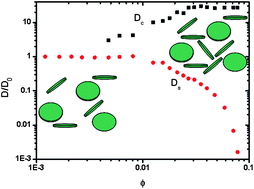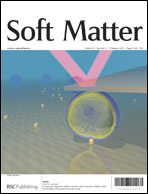We report on depolarized and non-depolarized dynamic light scattering, static light scattering, and steady shear viscosity measurements on interacting charge-stabilized gibbsite platelets suspended in dimethyl sulfoxide (DMSO). The average collective and (long-time) translational self-diffusion coefficients, and the rotational diffusion coefficient, have been measured as functions of the platelet volume fraction ϕ, up to the isotropic–liquid crystal (I/LC) transition. The non-depolarized intensity autocorrelation function, measured at low scattering wavenumbers, consists of a fast and a slowly decaying mode which we interpret as the orientationally averaged collective and translational self-diffusion coefficients, respectively. Both the rotational and the long-time self-diffusion coefficients decrease very strongly, by more than two orders of magnitude, in going from the very dilute limit to the I/LC transition concentration. A similarly strong decrease, with increasing ϕ, is observed for the inverse zero-strain limiting steady shear viscosity. With increasing ϕ, increasingly strong shear-thinning is observed, accompanied by a shrinking of the low shear-rate Newtonian plateau. The measured diffusion coefficients are interpreted theoretically in terms of a simple model of effective charged spheres interacting by a screened Coulomb potential, with hydrodynamic interactions included. The disk-like particle shape, and the measured particle radius and thickness polydispersities, enter into the model calculations via the scattering amplitudes. The interaction-induced enhancement of the collective diffusion coefficient by more than a factor of 20 at larger ϕ is well captured in the effective sphere model, whereas the strong declines of the experimental translational and rotational self-diffusion coefficients are underestimated.


 Please wait while we load your content...
Please wait while we load your content...